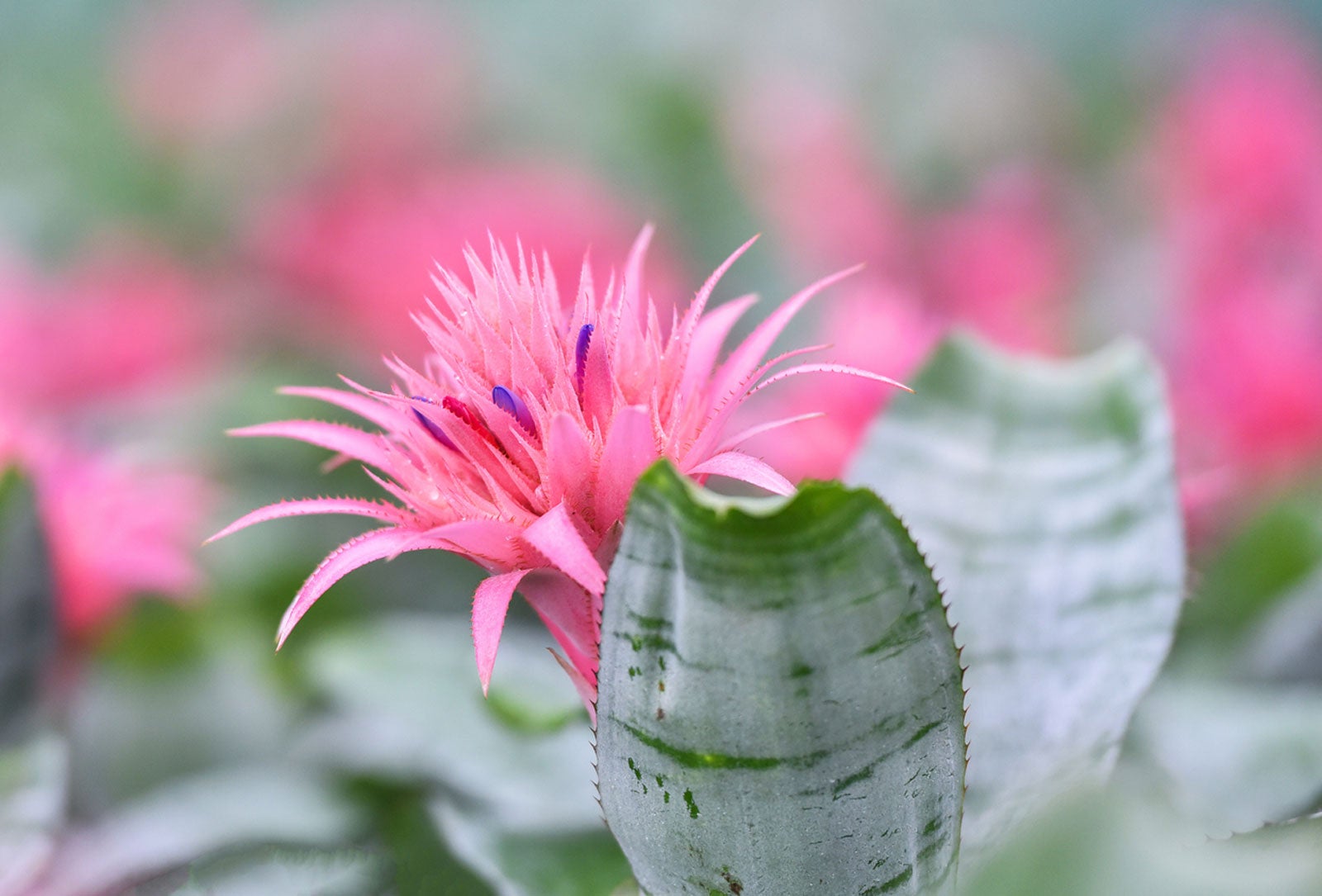Aechmea Bromeliad Info – How To Grow Aechmea Bromeliads


Aechmea bromeliad plants are members of the Bromeliaceae family, a large group of plants that includes at least 3,400 species. One of the most popular, Aechmea, is an evergreen with rosettes of distinctive variegated or banded leaves of silvery grey, often with spiny edges. A stunning, long lasting, bright pink flower grows in the center of the plant.
In spite of their exotic appearance, growing an Aechmea bromeliad is actually very simple. Read on and learn how to grow Aechmea bromeliads.
Aechmea Bromeliad Info
These plants are epiphytic. In their natural environment they grow on trees, rocks, or other plants. Aechmea bromeliad care can be achieved by mimicking this environment or by growing in containers.
The plants do well in a container filled with a potting mix that drains quickly, such as a combination of half commercial potting soil and half small bark chips. An orchid potting mix also works well. Large plants can be top heavy and should be in a sturdy pot that isn’t easily tipped.
Place your Aechmea bromeliad plant in indirect light or moderate shade, but not in direct sunlight. Temperature should be at least 55 degrees F. (13 C.). Keep the cup in the central rosette about half full of water at all times; however, don’t keep it completely full, as it may rot, especially during the winter months. Empty the cup every month or two so the water doesn’t become stagnant.
Additionally, water the potting soil well every month or two, or whenever the soil is somewhat dry, depending on temperature and humidity in your home. Decrease water during the winter months and keep the soil on the dry side.
Rinse the leaves at least once every year, or more if you notice buildup on the leaves. It’s also a good idea to mist the leaves lightly once in a while.
Sign up for the Gardening Know How newsletter today and receive a free copy of our e-book "How to Grow Delicious Tomatoes".
Fertilize the plants lightly every six weeks when the plant is actively growing in spring and summer, using a water-soluble fertilizer mixed to one quarter strength. Don’t feed the plant during the winter months.

A Credentialed Garden Writer, Mary H. Dyer was with Gardening Know How in the very beginning, publishing articles as early as 2007.